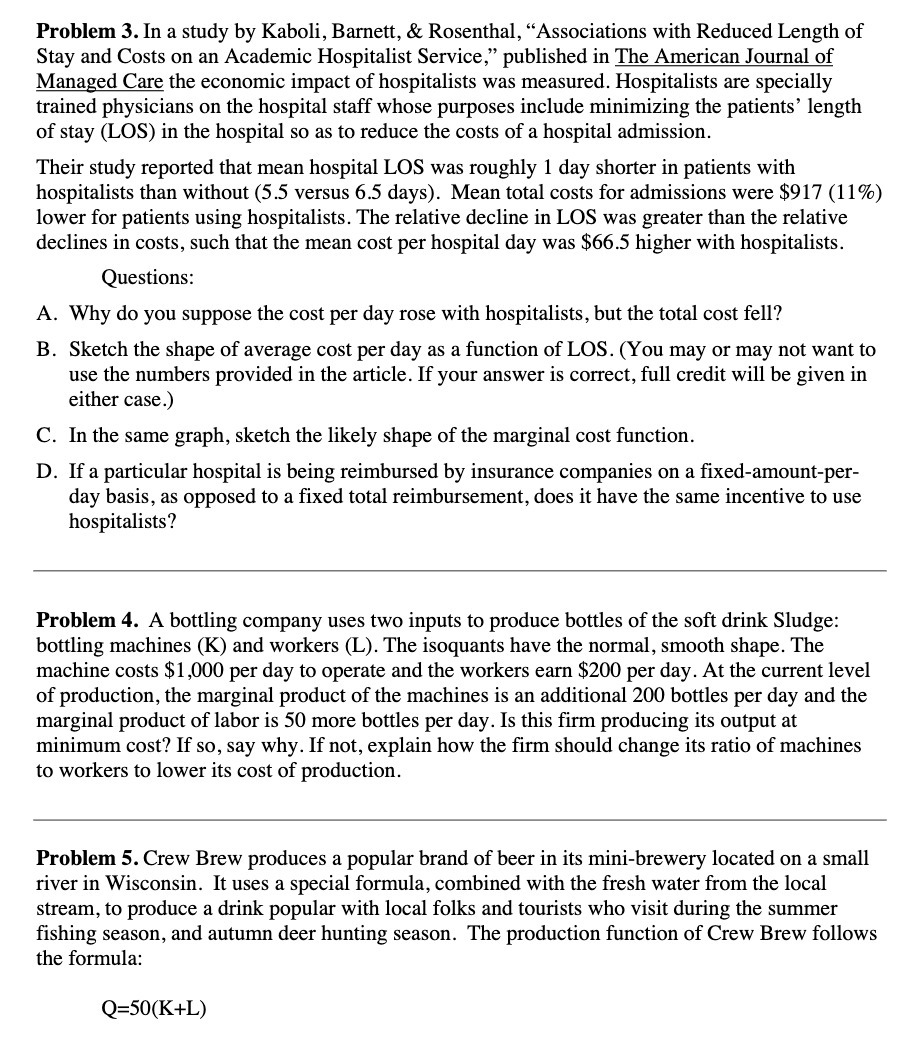Problem 3. In a study by Kaboli, Barnett, 8r. Rosenthal, \"Associations with Reduced Length of Stay and Costs on an Academic Hospitalist Service,\" published in The Aunerican Journal of Managed Care the economic impact of hospitalists was measured. Hospitalists are specially trained physicians on the hospital staff whose purposes include minimizing the patients' length of stay (L08) in the hospital so as to reduce the costs of a hospital admission. Their study reported that mean hospital LOS was roughly 1 day shorter in patients with hospitalists than without (5 .5 versus 6.5 days). Mean total costs for admissions were $91? (11%) lower for patients using bospitalists. The relative decline in L05 was greater than the relative declines in costs, such that the mean cost per hospital day was $66.5 higher with bospitalists. Questions: A. Why do you suppose the cost per day rose with bospitalists, but the total cost fell? 13. Sketch the shape of average cost per day as a function of LOS. (You may or may not want to use the numbers provided in the article. If your answer is correct, full credit will be given in either case.) . In the same graph, sketch the likely shape of the marginal cost function. U0 . If a particular hospital is being reimbursed by insurance companies on a xed-amount-per- day basis, as opposed to a fixed total reimbursement, does it have the same incentive to use hospitalists? Problem 4. A bottling company uses two inputs to produce bottles of the soft drink Sludge: bottling machines (K) and workers (L). The isoquants have the normal, smooth shape. The machine costs $1 ,000 per day to operate and the workers eam $200 per day. At the current level of production, the marginal product of the machines is an additional 200 bottles per day and the marginal product of labor is 50 more bottles per day. Is this rm producing its output at minimum cost? If so, say why. If not, explain how the rm should change its ratio of machines to workers to lower its cost of production. Problem 5. Crew Brew produces a popular brand of beer in its mini-brewery located on a small river in Wisconsin. It uses a special formula, combined with the fresh water from the local stream, to produce a drink popular with local folks and tourists who visit during the summer shing season, and autumn deer hunting season. The production function of Crew Brew follows the formula: Q=50(K+L)







